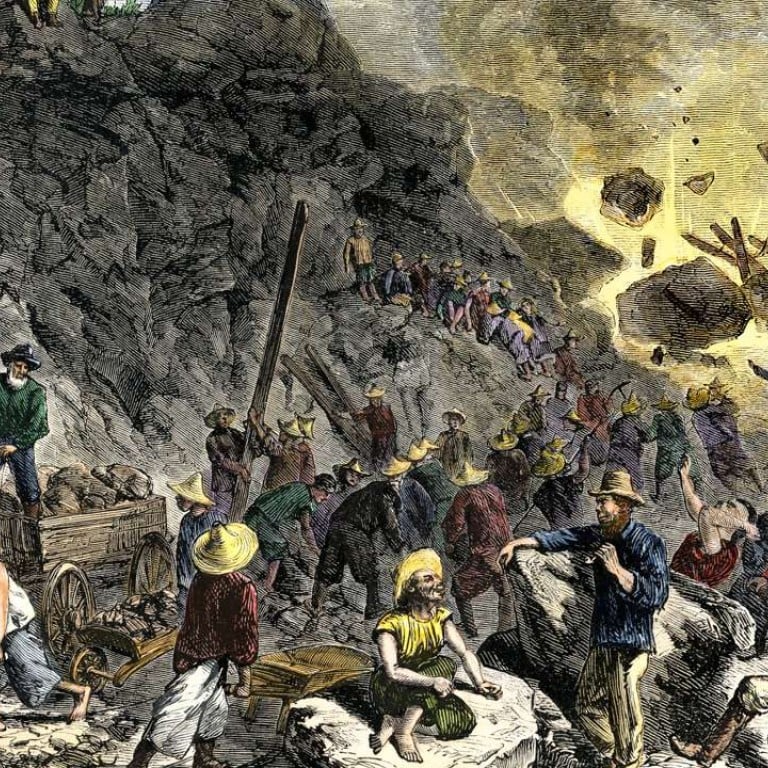
Review | Book review: a new contender for the Great Chinese-American Novel
With The Fortunes, a novel in four sections, Peter Ho Davies has gathered the threads of Chinese-American identity and woven a brilliant, ambitious and indelible tale

By Peter Ho Davies
Houghton Mifflin Harcourt
Ask an avid reader to name the Great Chinese-American Novel and they might suggest The Woman Warrior, by Maxine Hong Kingston, Donald Duk, by Frank Chin, or The Joy Luck Club, by Amy Tan.
And that list may soon include The Fortunes, the latest novel by Welsh-Chinese author Peter Ho Davies. In his inventive and transporting book, Davies rewrites history through the lives of Chinese Americans, following characters from different periods of the 150-year-old diaspora.
That Davies should pen the Great Chinese-American Novel is intriguing given that he is neither American nor fully Chinese. The author moved to the United States to teach writing – he is a faculty member at the University of Michigan’s prestigious Master of Fine Arts programme – and this sojourn sparked an exploration of the complex and often fraught lot of the Chinese in America. His books, he says, “are driven in part by my desire to understand [my] different heritages”.
Although his move from Britain to the US was brought about by privileged circumstances, Davies clearly empathises with the immigrant experience. Blending historical fact with fictional artistry, his ambitious, richly textured book drops the reader into four distinct narratives.

The first follows Ah Ling, the Tanka manservant of Charles Crocker, a railroad baron who, along with Leland Stanford, builds the transcontinental railroad in the 1860s. Crocker’s deep affection for Ah Ling is what leads him to invite thousands of Chinese to California to blast tunnels through mountains and hammer down thousands of miles of track.
Next Davies invites us into the experience of Anna May Wong, Hollywood’s first Chinese-American movie star. The daughter of a Chinatown laundryman, Wong rises as an actress throughout the 1920s and 30s. Although anti-miscegenation laws forbid her from kissing her male co-stars on screen, she ends up in bed with many of the directors and artists she works with, including Marlene Dietrich, but loses out on the role of her lifetime: O-Lan in the major motion picture The Good Earth. (Instead, German actress Luise Rainer snags the part, and wins an Academy Award for her “yellow-faced” performance as a Chinese peasant.) At the height of her career, Wong makes her only trip to China, to visit her father, who has returned to live out his life. She realises that in China she is American and in America she is Chinese, and that she does not fully belong anywhere.

In the third section we find ourselves in Detroit during the 1980s, where the brutal murder of Vincent Chin mobilises Asian Americans into action. And finally, in the fourth section of The Fortunes, a biracial writer journeys with his wife to China to adopt a baby girl and grapples with the question of where he is truly from.
Davies says the four main characters of his book “aren’t related by blood but they are bound to one another in some essential sense … jokes, images, the echoes and ‘call backs’ in the language are all there in place of those bloodlines, to suggest those affinities”.

Once on Gold Mountain he ends up nowhere near any gold, instead working in a Chinese laundry, where he meets a young woman, known only as Mei Mei. By day, she scrubs grime from the shirts of the prospectors, whose clothes are caked with the dirt of disappointment and failure. (Every once in a while, however, a flake of gold floats from a seam, and the launderers squirrel it away among a secret cache of coins meant to buy their freedom.)
By night, Mei Mei lies back on her bed, sometimes dressed in the linen shirts of her daytime customers, and services a different kind of client. With few women at the frontier of this still wild land, Mei Mei must service the rough-and-tumble men who form the bachelor communities around her, offering them brief moments of human contact and comfort. “This is my gold,” she hisses at Ah Ling, pointing to her vulva when she senses his pity.

From the laundry room, Ah Ling lucks his way into Crocker’s employment, and there, like the mythical Monkey King, he manages to climb higher and higher in status and relative riches. But after he views at first-hand the conditions under which his fellow countrymen toil on the railroad, Ah Ling knows he must leave his cushy life with the Crocker family and join the Chinese labour gangs.
Davies based Ah Ling’s character on Crocker’s real-life houseboy. “He played a pivotal role [in history],” the author explains. “I found myself fascinated with this mystery man.”
With characters as complex as Ah Ling and Mei Mei, and a backdrop as meaningful as Gold Mountain, a reader might question why Davies didn’t continue mining, so to speak, this world for an entire book.
But Davies’ master plan eventually becomes clear. Set in the present, the fourth story brilliantly weaves together all the narratives. The stories subtly echo each other – it’s like seeing your great-grandfather’s old black-and-white portrait and recognising your own eyes.
Davies seems to suggest that no matter how disparate the experiences of Chinese immigrants in America, all are bound by a collective history; one of toil, heartbreak, exclusion and tenacity. His attempt to bring to life the trail from the Middle Kingdom to Gold Mountain is ambitious and indelible.

